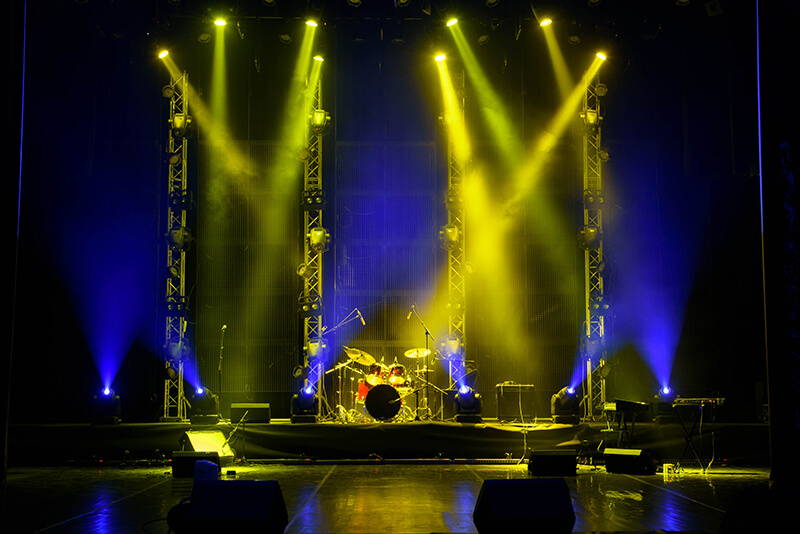The average Setlist
How setlists are created and what to expect when going to a concert
 The setlist is what drives a concert. However, it is much more than a list of songs and the order they are meant to be played in. There are a number of considerations that need to be borne in mind when artists create a setlist. We’ve used the data we collect, as well as the experiences of regular concert-goers to give you an idea of what the average setlist can look like. It’s important to remember that artists are artists, and may change their minds, so we’re showing you what the ‘average’ setlist looks like, not what every setlist looks like
The setlist is what drives a concert. However, it is much more than a list of songs and the order they are meant to be played in. There are a number of considerations that need to be borne in mind when artists create a setlist. We’ve used the data we collect, as well as the experiences of regular concert-goers to give you an idea of what the average setlist can look like. It’s important to remember that artists are artists, and may change their minds, so we’re showing you what the ‘average’ setlist looks like, not what every setlist looks like
Setlist Elements
Concert Opener and first songs
The traditional way to open a concert is with the first track on the most popular album the artist created, or a song from the last album. One popular trend right now is for artists to play an intro that is pre-recorded. This will happen before the opening number.
To get things off to a strong start the artist will usually play something upbeat and happy. This will most likely be one of their hits, and will serve to get the crowd into the right mood.
Then, after building the crowd up, the artist often switches gear by playing a song from the new album they are on tour promoting.
Cover versions
Cover versions are often brought out then. It may be one off an album, or one the artist has decided to perform outside of their usual musical output. Think Justin Timberlake covering a Prince song.
Singles and old tunes
Next, we usually have a track that sounds unique, when compared to the band’s usual music. It’s usually an old single, and kind of a nod to fans for loyalty. To understand this better, we doubt that Radiohead have played Creep live for some time, but if they choose to, that’s the kind of song we’re talking about.
Next, it’s common to play another single. This is often followed by a Deep Cut, in other words one of their critically acclaimed songs perhaps. It will be a song the artist likes, and the audience will appreciate the back catalogue even more when they hear the song. In a sense the song will be rare, because it’s not a single.
Songs fans love
Every established band or artist has an album that was not well-received. However, there will have been one song off of that album that fans love. So that will be played next. After that, it is common for a band to play an extended version of a song that was relatively short as part of the album it came from. With some artists, this can quite easily turn into a ‘jam’.
Some bands have an old B-side that hardcore fans may have said they liked. While this song might not be universally popular, it has some value with fans, so that particular song will be played at this stage.
Solos and ballads
Then back in to pick up the pace with a song that is perfect to sing along to. The audience will lap this one up. And right after that, the solos will come into play. A drummer might thrash out a unique set of beats. Or a guitarist may pull the band into a jam session on stage.
Next is the ballad. Even Metallica created ballads, and this is usually where a band may play it as part of their setlist.
They will then leap into another hit single. The difference is that the band will perhaps play it differently, as in faster, or with an acoustic guitar. To keep the momentum flowing, the band will most likely throw in a hit single again.
End of the show and the Encore
Nearing the end of the concert, the artist may opt to play a long song. This means long though, because it will often be a track that stood out from the rest of the songs on the album it came from. That uniqueness is often down to a track that is significantly longer than the others on the album. They will most likely follow that track with another hit single.
At the end of the concert they will choose to play the last song on their most popular album. It could be a contemplative piece of music, or a real crowd-pleaser to round the show. And then it’s time for the encore.
The Encore
The song the band is most associated with will likely be the first one played in an encore. And then finally, they will wheel out another hit single to close out the show. This can be quite effective in keeping a crowd motivated, because it may well be a song that the audience expects the artist to play, and they will have waited all evening for that particular song.
Most artists and well-established bands will follow that tried and true setlist. There will be ups and downs in mood, some indulgence for their fans, and hit songs sprinkled through the setlist.
While this may not be the case for every concert, the running order above has become pretty standard over the last few years.




